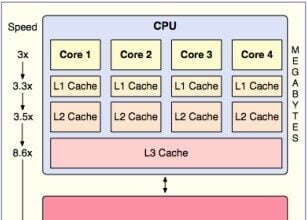I recently talked to a client who was fixated on a hub-and-spoke solution to support his company’s analytical applications. This guy had been around the block a few times and had some pretty set paradigms about how BI should work. In the world of software and data, the one thing I’ve learned is that there are no absolutes. And there’s no such thing as a universal architecture.
The premise of a hub-and-spoke architecture is to have a data warehouse function as the clearing house for all the data a company’s applications might need. This can be a reasonable approach if data requirements are well-defined, predictable, and homogenous across the applications—and if data latency isn’t an issue.
First-generation data warehouses were originally built as reporting systems. But people quickly recognized the need for data provisioning (e.g., moving data between systems), and data warehouses morphed into storehouses for analytic data. This was out of necessity: developers didn’t have the knowledge or skills to retrieve data from operational systems. The data warehouse was rendered a data provisioning platform not because of architectural elegance but due to resource and sk…
I recently talked to a client who was fixated on a hub-and-spoke solution to support his company’s analytical applications. This guy had been around the block a few times and had some pretty set paradigms about how BI should work. In the world of software and data, the one thing I’ve learned is that there are no absolutes. And there’s no such thing as a universal architecture.
The premise of a hub-and-spoke architecture is to have a data warehouse function as the clearing house for all the data a company’s applications might need. This can be a reasonable approach if data requirements are well-defined, predictable, and homogenous across the applications—and if data latency isn’t an issue.
First-generation data warehouses were originally built as reporting systems. But people quickly recognized the need for data provisioning (e.g., moving data between systems), and data warehouses morphed into storehouses for analytic data. This was out of necessity: developers didn’t have the knowledge or skills to retrieve data from operational systems. The data warehouse was rendered a data provisioning platform not because of architectural elegance but due to resource and skills limitations.
(And let’s not forget that the data contained in all these operational systems was rarely documented, whereas data in the warehouse was often supported by robust metadata.)
If everyone’s needs are homogenous and well-defined, using the data warehouse for data provisioning is just fine. The flaw of hub-and-spoke is that it doesn’t address issues of timeliness and latency. After all, if it could why are programmers still writing custom code for data provisioning?
When an airline wants to adjust the cost of seats, it can’t formulate new pricing based on old data—it needs up-to-the-minute pricing details. Large distribution networks, like retailing and shipping, have learned that hub-and-spoke systems are not the most efficient or cost-effective models.
Nowadays most cutting-edge analytic tools are focused on allowing the business to quickly respond to events and circumstances. And most companies have adopted packaged applications for their core financial and operations. Unlike the proprietary systems of the past, these applications are in fact well-documented, and many come with utilities and standard extracts as part of initial delivery. What’s changed in the last 15 years is that operational applications are now built to share data. And most differentiating business processes require direct source system access.
Many high-value business needs require fine-grained, non-enterprise data. To move this specialized, business function-centric content through a hub-and-spoke network designed to support large-volume, generalized data is not only inefficient but more costly. Analytic users don’t always need the same data. Moreover, these users now know where the data is, so time-sensitive information can be available on-demand.
The logistics and shipping industries learned that you can start with a hub-and-spoke design, but when volume reaches critical mass, direct source-to-destination links are more efficient, and more profitable. (If this wasn’t the case, there would be no such thing as the non-stop flight.) When business requirements are specialized and high-value (e.g., low-latency, limited content), provisioning data directly from the source system is not only justified, it’s probably the most efficient solution.







